I don’t pretend to understand the Alberta beer scene completely. After all, I was only there for about five days, and there’s only so much information you can process. Fortunately, brewers like to talk.
While the column this week is about the unique beer hall scene that Alberta has developed over the last two or three years, one of the things that you have to understand is the conditions that have made that possible. Ontario, because of its thoroughly unique set of laws, has just reached the point where there are 100 microbreweries (although, some of those are in planning.) British Columbia is going through a similar spurt of growth. Both Ontario and British Columbia have long and storied histories with craft brewing, dating back essentially to the advent of the craft beer movement. Alberta’s history is less storied.
The beer hall scene in Alberta exists mostly because of privatization in the early 1990’s, which means that there are any number of beers available on tap that would be impossible to get in Ontario. You might be tempted to leap to the conclusion that the demand for local beer doesn’t exist because of this available variety. Over the course of 48 hours, I got to sample things from Brooklyn, Deschutes, Ducato, Mikkeller, Evil Twin and Tamarack (which I had never tried before and which was a pleasant surprise.)
It seems to me that any scene that can support 60 or 72 or 120 taps is always going to be hungry for more variety, and that will play into the hands of anyone that can set up local breweries. The question is therefore “where are the local breweries?” Near as I can tell there are approximately 11 for the entire province, with three more in the offing.
The problem is that the barrier to entry is simply too high for there to be a rush to very small micro breweries or nano breweries. The way that licensing works in Alberta is that a Class E license (the one that lets you make beer) has a certain number of requirements, which I’ll quote here from the Licensee Handbook:
A Class E licence may be issued to a qualified applicant to manufacturer liquor in Alberta. The manufacturer must meet the following production requirements, with production capacity minimums met within 18 months of start-up:
a) Brewery
i) 5,000 hectolitres (1 hectolitre = 100 litres) minimum annual production capacity;
ii) all beer manufactured on site;
iii) fermentation, maturation and storage tanks with a minimum capacity of 10 hectolitres each; and
iv) 50 hectolitres minimum weekly capacity for fermentation, maturation and storage, with space available for additional tanks to achieve minimum annual production capacity
Now, this is truly interesting and goes a long way to explaining why you only have eleven breweries.
5,000 hl of beer doesn’t seem like a huge amount of beer, until you realize that it’s 500,000 litres.
That is to say that you have to be able to make a million pints of beer a year within 18 months of starting up. Additionally, all of your fermenters have to contain at least a thousand litres and you need at least enough of them to make five thousand litres a week. Even given those conditions, five thousand litres a week puts you at about half of your minimum annual production capacity, so you’re really talking about much larger scale equipment.
There are breweries in Ontario that have been around for more than a decade that have never reached the theoretical minimum amount of beer you’d need in Alberta for the AGLC to consider you above board. In point of fact, I’d guess that some of our more interesting new breweries may never see 5000hl.
Consider being someone looking to start up a brewery in Alberta. Can you imagine the relative cost of meeting those standards? You probably need at least a 10hl brewhouse, five 20hl fermenters, storage vessels to keep the product moving and possibly multiple bright tanks for packaging. Not to mention the packaging lines, the packaging materials, labour, renovations to whatever structure you’re going to end up in and you’ll need a sales force to move all of the beer that you’re producing. Simply, the barrier to entry is Capital.
You’d need a significant amount of investment just to open your doors, and you’d better be damned sure that you’re brewing something the public wants. You’d need to be turning a profit fairly quickly in order to keep the doors open. As I toured around the breweries, there were some significant indications that this doesn’t always happen.
Hog’s Head Brewing in St.Albert is Edmonton’s newest brewery, and I can tell you that they do not suffer from lack of expertise or talent or ambition. Their first beer was a year round spiced pumpkin beer, which should tell you all you need to know about their faith in their product. The Hopslayer IPA is probably their most objectively impressive brew, containing five hop varieties at somewhere near 80 IBU. Their beers are as hop forward and as assertive as anything being brewed in Canada, and they’ve only been at it for six months. Plus, their labeling is entertaining.
The brewery itself, if I may be forgiven for saying so, is held together by engineering skill and sheer force of will. It seemed to me that they were running flat out in an attempt to reach the amount of production the provincial government stipulates. I have no doubt that they’ll succeed, but as their brewer, Bruce, was showing me around the brewery, he would periodically point out which breweries their equipment had come from. The equipment was certainly well loved, with the occasional ding or scratch that years of vigorous use still don’t quite account for.
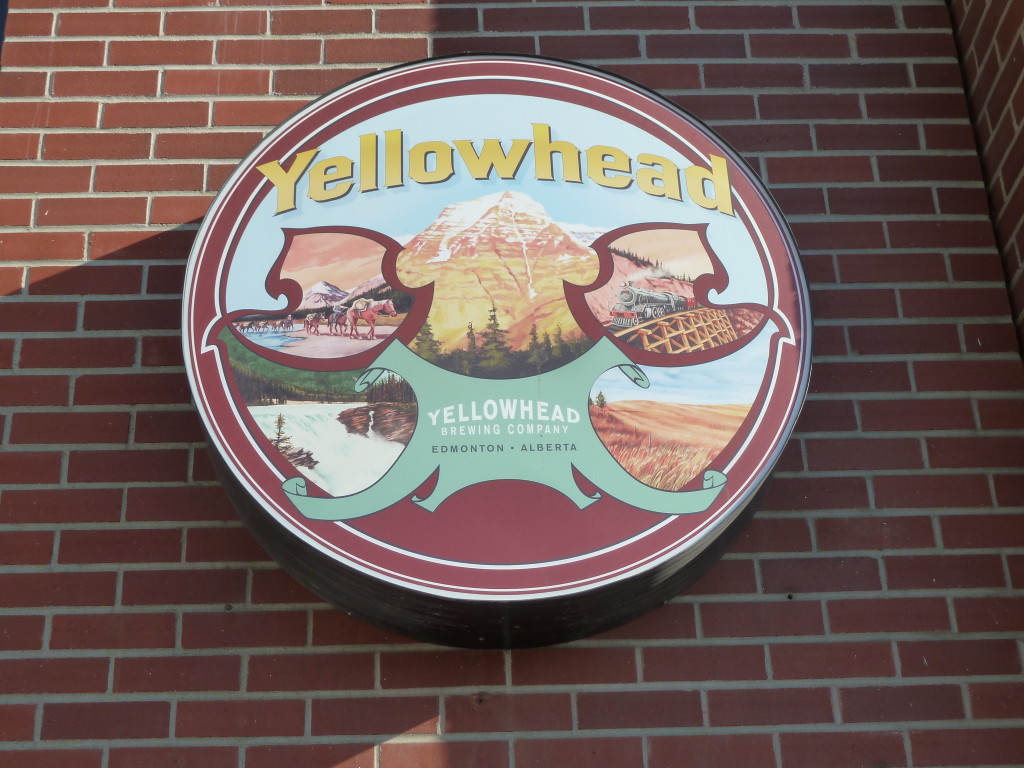
Sometimes I think to myself that a brewery logo doesn’t really need a caption. This should probably have been one of those times.
Another example is the Yellowhead Brewery in Edmonton. It’s housed in a building that was specially designed for a brewery. In fact, it previously held Maverick Brewing. It’s a delightful space, and their brewer, Bryce, is clearly extremely able and talented. They currently brew Yellowhead Lager, which I would consider a Northern German Pilsner. It has that light grain and slight hint of grape, with a small hoppy bite. Eventually, they’re looking to expand to a second variety. For the time being, they would be content with becoming Edmonton’s beer in much the same way that you might claim Steam Whistle was Toronto’s beer. I would not claim that they are copying the model, but they are doing one thing well.
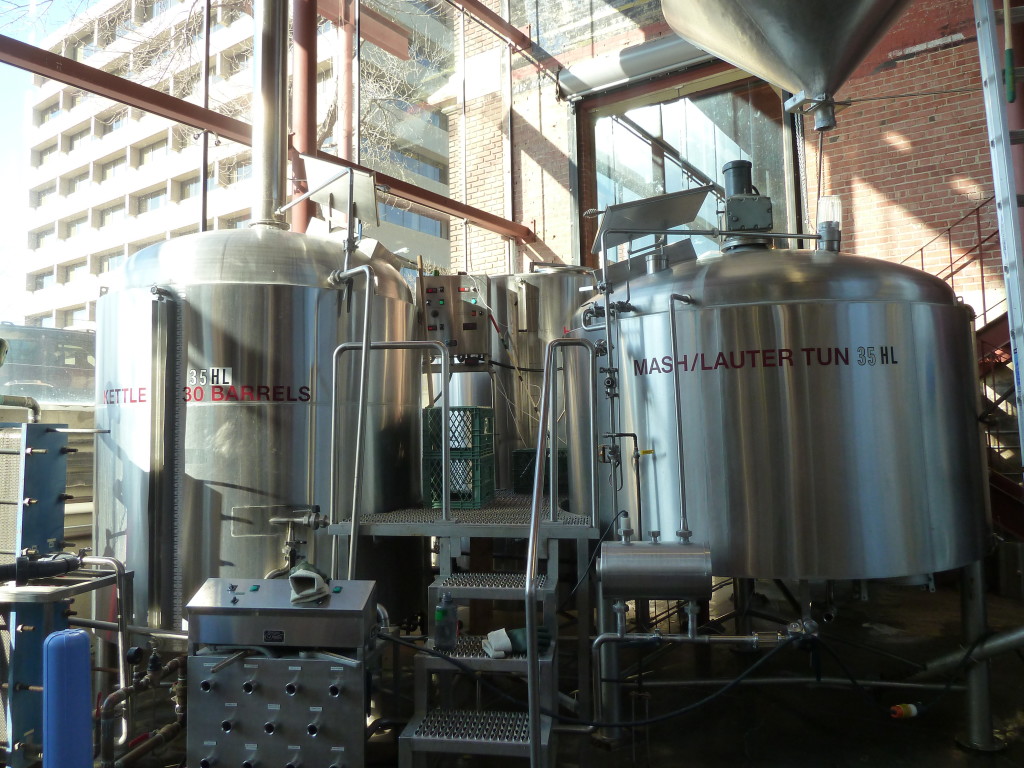
The brewhouse at Yellowhead is visible from the street, which is an excellent reason to break out your brewhouse polish and chamois.
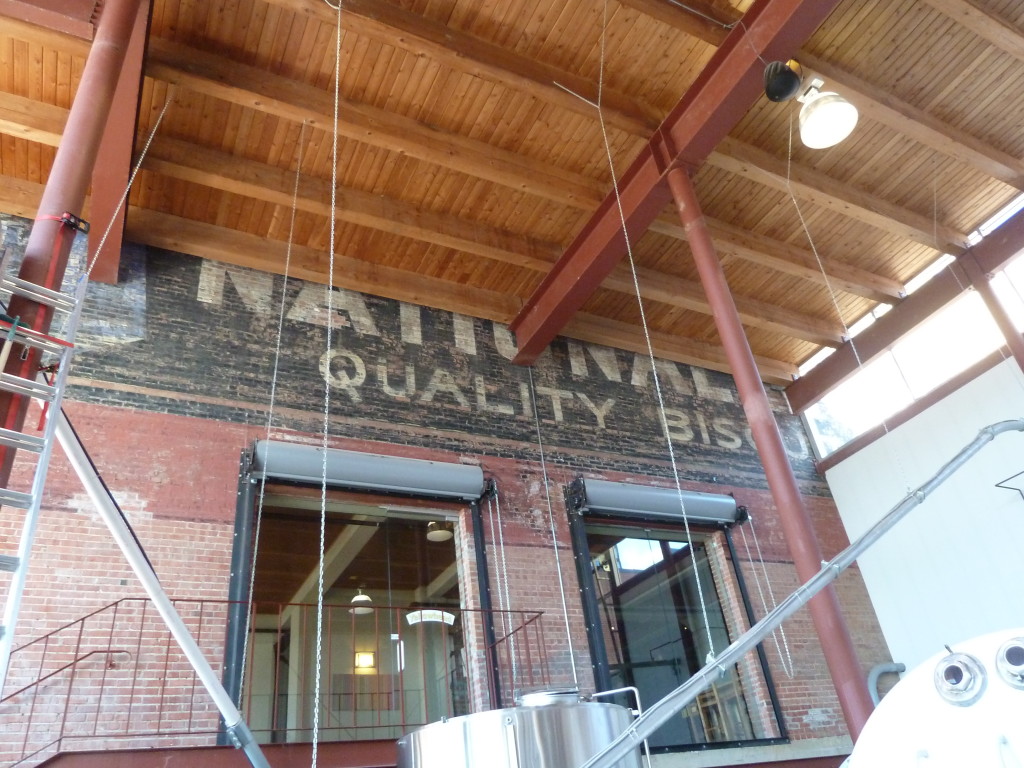
The space the brewery occupies at Yellowhead might be one of the nicest I’ve ever seen. There’s such an airy feeling.
The thing that struck me is that the space is full of the spectre of Maverick Brewing. From their white horizontal tanks which now sit disused in a corner of the brewery to the unused promotional materials housed elsewhere in the rambling warehouse, there are reminders that the previous tenants did not quite make it. Bryce was quick to point out how ludicrous some of those promos were. “Who gives out a knife in a case of beer?”
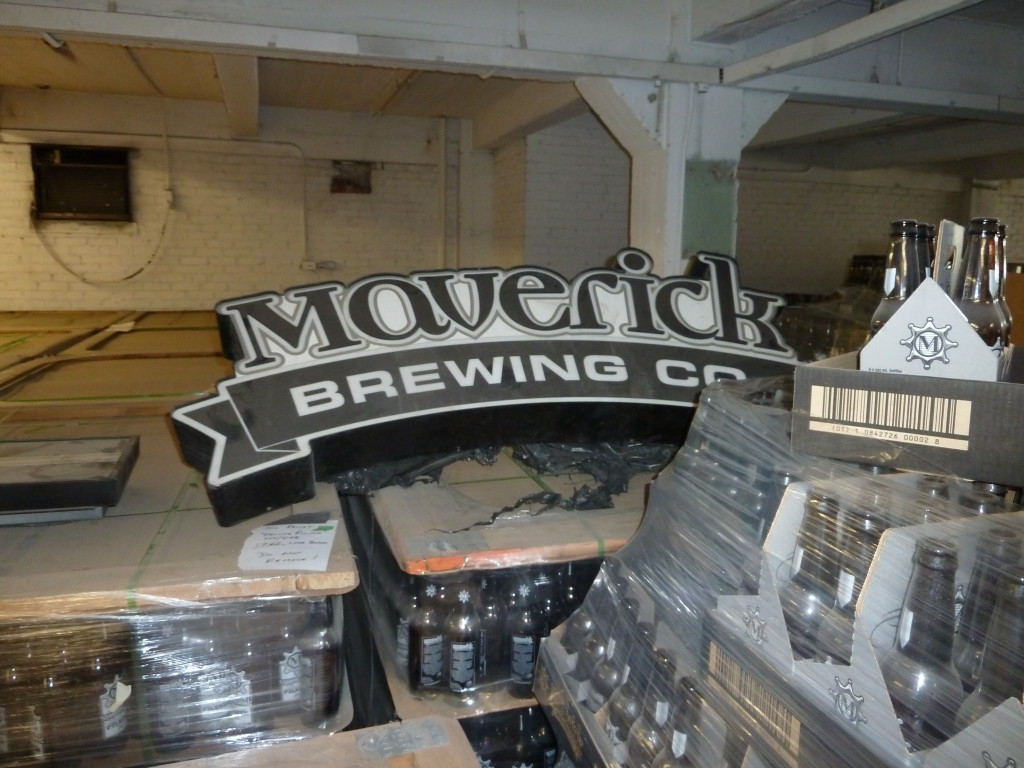
Sometimes, even with aggressive marketing, breweries don’t make it out of their first few years in Alberta.
I don’t know whether I would find the reminder that Maverick Brewing didn’t make it a source of motivation or a big dark cloud over the proceedings, but looking at the almost impossibly polished new stainless steel fermentors, I got the sense that it is ignored as much as possible while people get on with business. When you’ve got to brew 5,000hl in your second year, it is hard to afford time for reflection.
In some cases, because of the scale and capital needed, you end up with what is a beautifully engineered almost entirely new brewery. Village Brewery in Calgary fits the bill completely on this front and is probably one of the best looking breweries I’ve ever seen. I’m a bit of a duffer on the process front when it comes to brewing, but looking out from the tasting room balcony I think that even a layman could probably tell you how the entire process would flow from brewhouse to kegging at Village. It’s almost terrifyingly well appointed.
They make three varieties at the moment and work in a seasonal periodically. There was a Chai Winter Porter earlier this year. During my visit they were refining a special project for the spring and debating the amount and type of spicing like brewers everywhere do. Of their regular lineup, I believe that the Witbier is probably their strongest offering, with the Black IPA running a close second.
The truly interesting thing about Village is the model that they’re using for promotion. The business card reads “It Takes A Village,” a sentiment that Jim Button has borrowed from Hillary Clinton. You could be forgiven for forgetting that Village is in the beer business. The concern seems to be with bringing people together within Calgary, whether through culture or music. 10% of the bottom line goes to promoting a sense of community. There are podcasts available through the website. They even have a radio truck. They support visual arts. Their t-shirts and other paraphernalia are designed by local artists who keep the profits from their sales.
I’m normally as skeptical as hell when I see things like this. At the same time, having talked to Jim at some length, I know that he’s genuinely interested in expanding Calgary’s cultural scene. Clearly, one of the side effects is that the brewery appears to be hip and with it and sells an awful lot of beer into the bargain. Not only does it ensure sales for a startup brewery, the entire culture of the city benefits and Village Brewing becomes inseparable from the artistic scene as it develops over the next decade. Jim would make a good mayor.
The commonality in all of these approaches is that they are finding ways to deal with AGLC License E. This has resulted in a situation where Yellowhead and Hog’s Head simply want to be the beer of choice for Edmonton and Village wants to be Calgary’s craft beer. This, more or less, means that neither of these cities currently have a representative brew. Given the state of craft brewing in the rest of North America in 2013, where many major cities have as many breweries as Alberta does in total, this is baffling to an outsider.
It strikes me as odd that Alberta, which is rather more American than the majority of provinces, should have strictures in place that effectively limit the amount of local competition in brewing. It’s especially confusing when you consider the drinking culture that has sprung up in Edmonton and Calgary over the course of the last few years. Clearly, this is a market that can support an almost endless amount of variety. Sherbrooke Liquor has 1400 beers on offer from day to day. Craft Beer Market is absolutely thrumming along with over a hundred taps. The demand is there, but the supply seems to come almost exclusively from outside the province of Alberta. It’s not without reason that breweries from British Columbia and Ontario view Alberta as an additional market for their products.
If ever there was a time to revisit the reasoning behind the laws as they exist, it is now. Craft brewing provides employment. It provides a source of revenue through taxation. It provides a sense of local pride. Limiting the expansion of the industry with an artificial minimum volume seems vaguely anti-capitalist.
Changing the laws would also display some significant forethought for the brewing program that’s going in at Olds College in Alberta. In Ontario, we’re starting to see graduates of the Niagara College brewing program opening their own breweries, albeit on a relatively small scale. Imagine going into the Olds College program under the misapprehension that you’ll be able to start your own brewery fresh out of school. Unless you’ve got an extremely wealthy silent partner, that’s a pipe dream in Alberta. As it stands, I imagine this would probably result in brain drain to British Columbia or the United States.
The truth is that with some minor changes to the laws as they exist, you could have a craft beer explosion in Alberta within the next five years. The demand is there, and from what I’ve seen, there’s certainly no lack of talent or ambition.
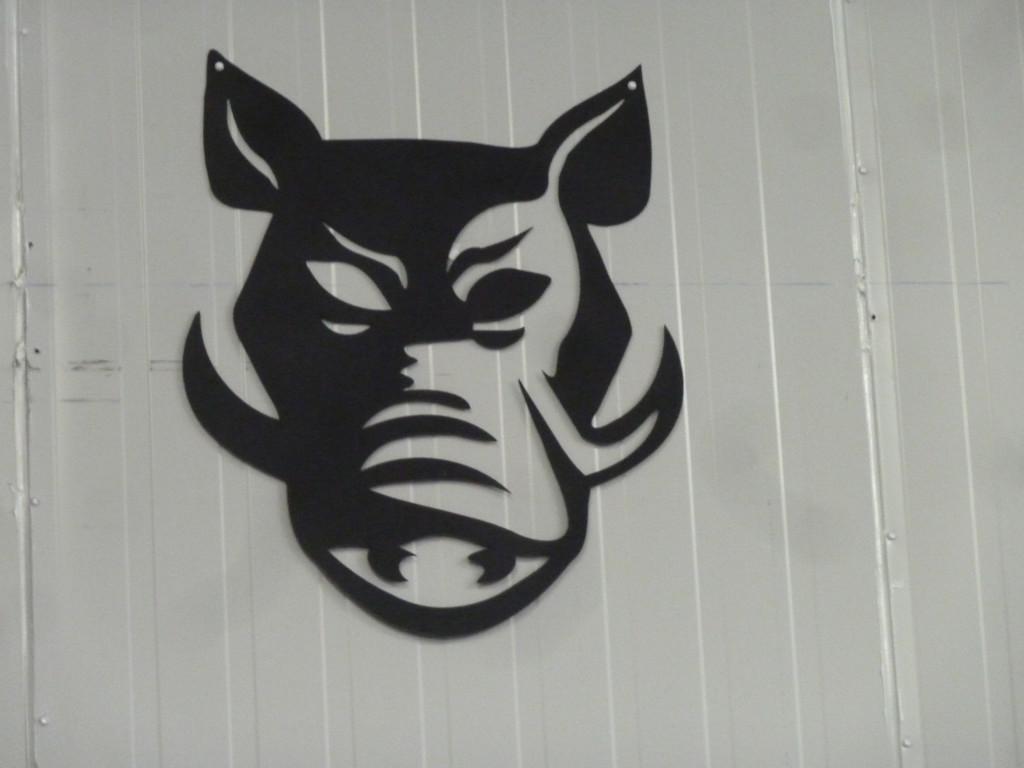
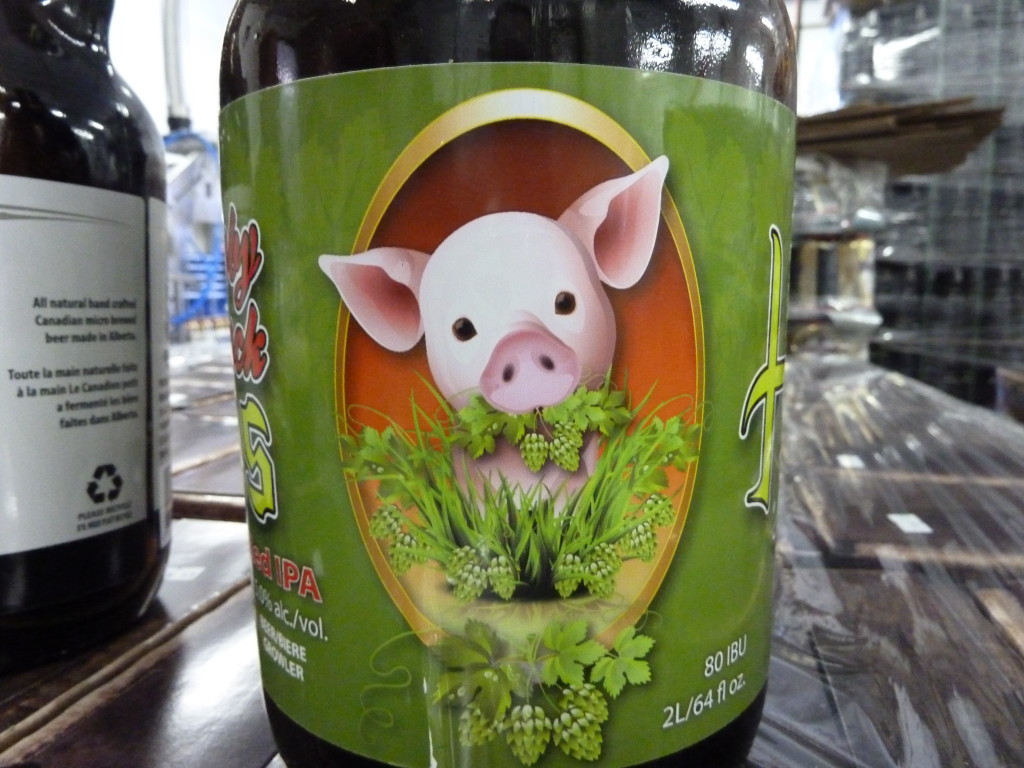
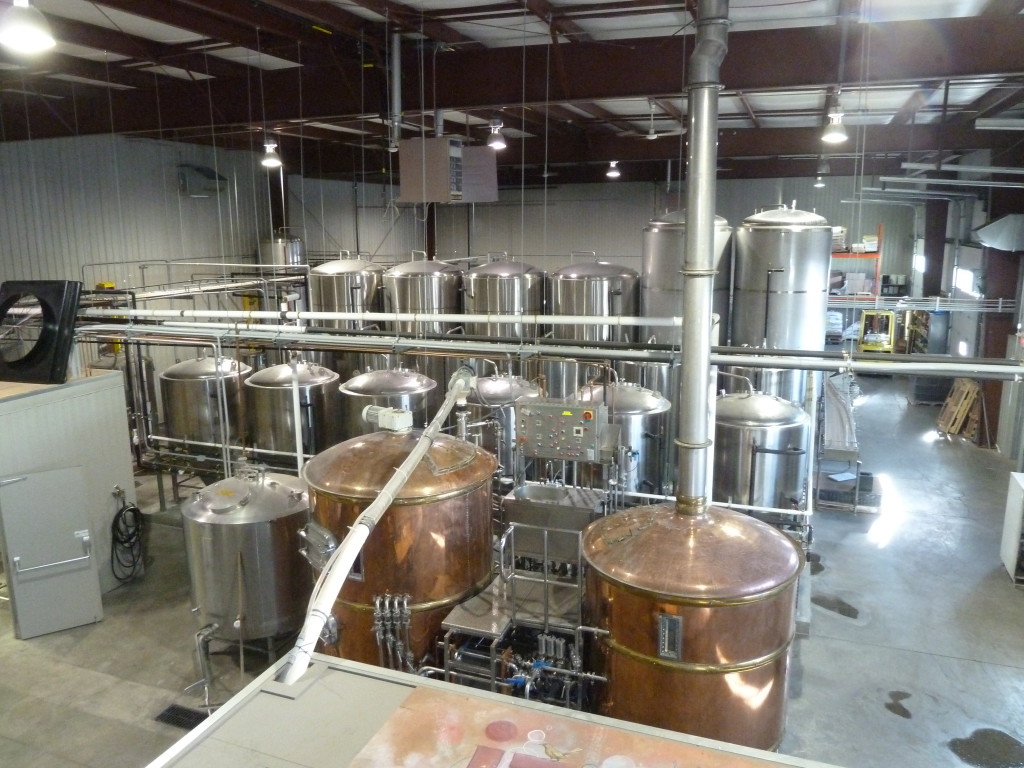
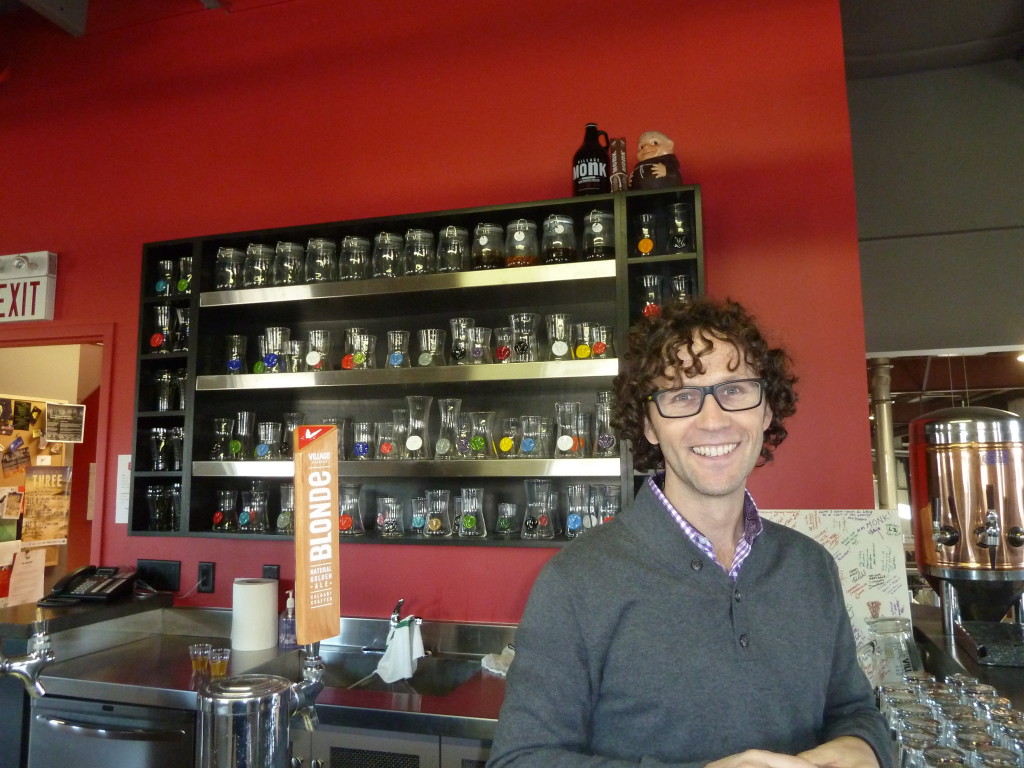
You may want to check out Provincial legislature committee meetings on the regulation. Bet you will find how wealthy business communities can often work as anti-competitive forces. Plus, Alberta may be a bit like the United States but that bit might be Montana or Utah where these sorts of social controls upon creativity are common. Ontario has much more in common with New York State, the powerhouse of American creativity that it is, than Alberta does.
The regulation in Alberta actually says you need the capability to produce the min quantities, but you are not required to actually produce it. This still inhibits many new breweries in the province.
Still, the capability requires the equipment, which requires the expenditure. You’re right, of course, that the application of the law and the law as written are two separate things. However, that’s still a huge barrier to entry into the marketplace.
John,
Too bad you didn’t go see the established craft brewers, Alley Kat and Wildrose that could have given you more insight. Next time I guess….
And by John I meant Jordan….not enough coffee today….
That’s alright. Coffee is important.
I did make it to Alley Kat. I like Alley Kat a lot, and I heard a huge number of very supportive things about Neil Herbst. In the case of Wild Rose, I simply ran out of time. Since I write about beer in the Calgary and Edmonton Sun, not everything I learned is in this article. Really, the point of the trip was to get some context for the beer scenes out there, but when you see something that makes as little sense as the situation for startups, you owe it to yourself to do something with it while it’s still fresh in your mind.
Be sure to check out Ribstone Creek next visit as well – https://www.facebook.com/RibstoneCreekBrewery
Jordan, great piece. As for Mayor, probably the worst thing I could do for the city…
Our Hop Slayer IPA is 7.5% and 105 IBU and Baby Back Hops is a Red IPA at 80 IBU, at 6%
Nice to have you stop by. Bruce
Yes indeed. You’re absolutely right. I had 80 in my head because it was the picture I had.
Hop Slayer is awesome.
May I suggest you update this article; the micro- and nano-brewery picture has changed completely just in the past 3 years. I think you will be pleasantly surprised.
Would do if I were still covering Alberta. Haven’t really had a national focus since February 2015 or so.